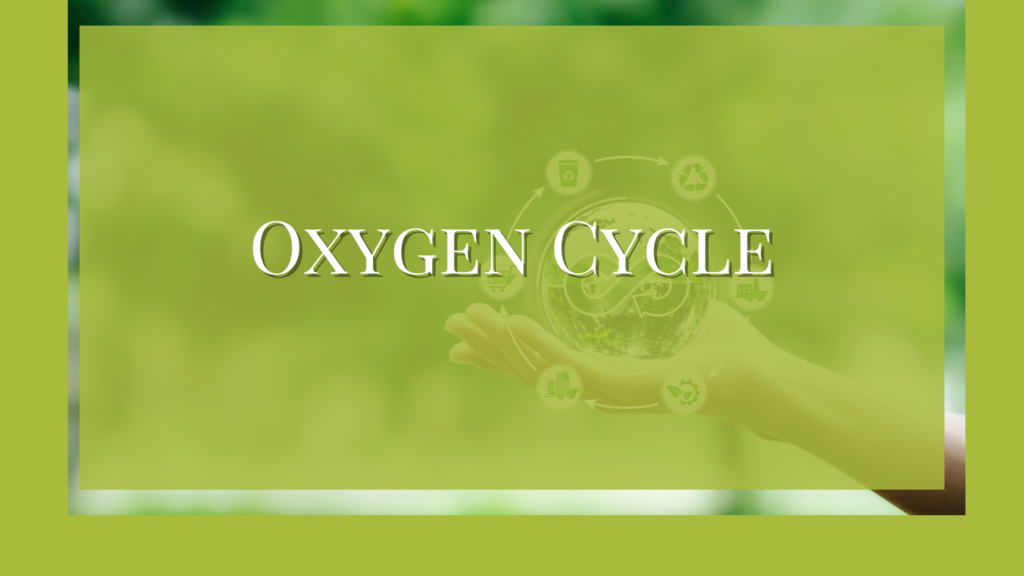Oxygen is the life-supporting portion of the earth’s atmosphere. Our atmospheric air contains about 21% oxygen. It is also present in dissolved form in water. The biogeochemical cycle of oxygen, also known as the oxygen-oxygen cycle, is the continuous exchange of oxygen between plants, animals, and other components in the biosphere, lithosphere, and hydrosphere. It plays a crucial role in maintaining oxygen levels on Earth.
Biogeochemical Cycle of Oxygen Explained
The oxygen cycle begins with photosynthesis, primarily performed by plants, algae, and some bacteria. During photosynthesis, these organisms use sunlight, water, and carbon dioxide to produce carbohydrates. Oxygen is expelled as a by-product of photosynthesis.
This oxygen is released into the atmosphere and is available for all organisms. Plants and animals utilize this oxygen for respiration and return it to the atmosphere and water as carbon dioxide.
This carbon dioxide is a raw material for carbohydrate synthesis. Green plants use this essential material for photosynthesis. Once again, pure oxygen is released as a by-product of this process. Through this simple yet vital cycle, oxygen is replenished and maintained in the ecosystem.
Uses of Oxygen
Oxygen is also used for fossil fuels or biomass combustion and releases energy. This process produces carbon dioxide, water, and heat. Such energy is used for various activities, such as transportation, heating, and electricity generation.
Oxygen is exchanged between the atmosphere and water bodies as well. This oxygen gets dissolved in the water through aeration or oxygenation, making it available for aquatic organisms. Aquatic plants and algae also contribute to the oxygen levels in water through photosynthesis, similar to terrestrial plants.
Biochemical processes in the lithosphere also utilize oxygen. The processes such as weathering, rock erosion, etc also release oxygen into the atmosphere. Although this is an important part of the oxygen cycle, cycling here is a relatively slow process when compared to cycling by other living components.
Atmospheric oxygen is also a source of the ozone layer that envelops the earth, at an altitude of about 17 km. This layer prevents the entry of UV rays of the sun from reaching the earth’s surface. Thus, the ozone layer indirectly helps with plant metabolism by keeping away the lethal rays from the sun.
Conclusion
Thus, the oxygen cycle is an interconnected biochemical process such as photosynthesis, respiration, combustion, etc. It helps exchange oxygen between the atmosphere, biosphere, hydrosphere, and lithosphere. It is essential for maintaining optimal oxygen levels to support life on Earth.
References
- Shukla, R.S. and Chandel, P.S. (2001) Plant Ecology. S. Chand and Company Ltd., New Delhi.
- Verma, P.S., Agarwal, V.K. (1999). Cell biology genetics molecular biology evolution and ecology. New Delhi: S.Chand Co.(Pvt) Ltd.
- Oxygen Cycle – Production, Stages, Uses, Importance




